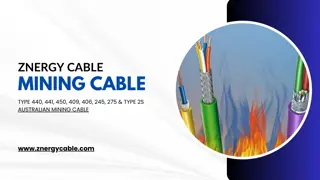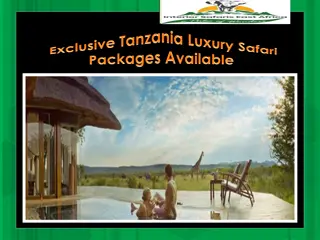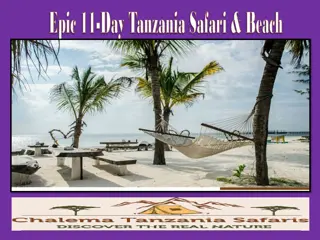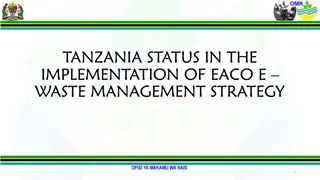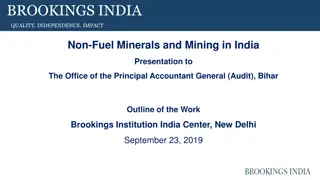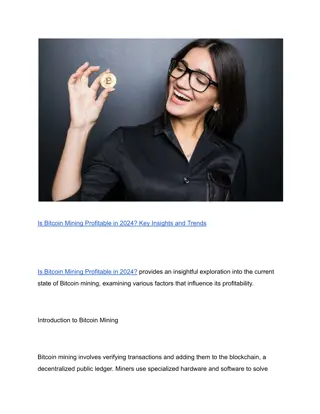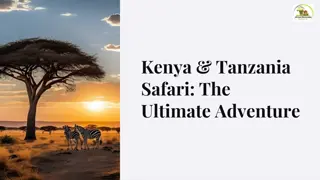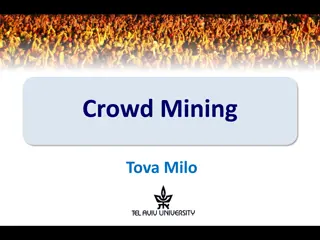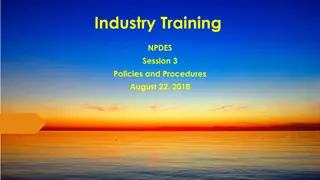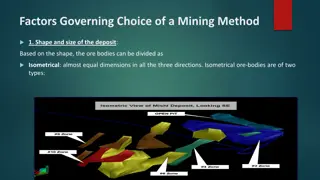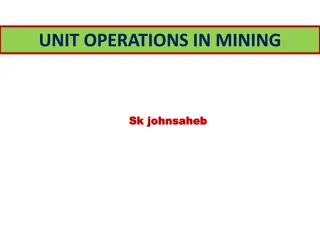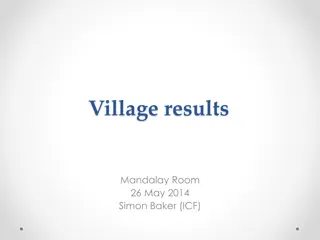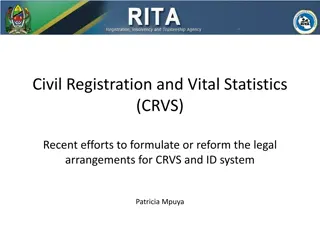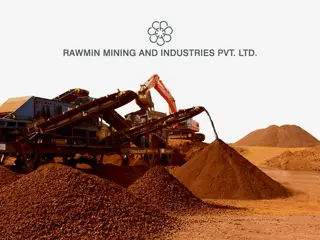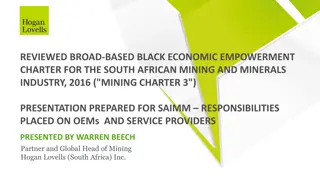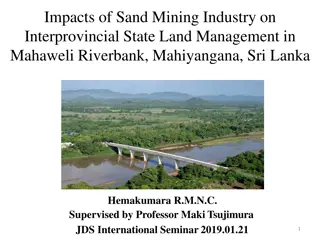Enhancing Socio-Economic Benefits of the Mining Industry in Tanzania
Tanzania's mining sector holds significant wealth with diverse mineral resources, including gold. The country aims to enhance competitiveness, create jobs, develop skills, empower local communities, and ensure environmental sustainability. Initiatives include policy reviews and strategies for effective management of the sector.
Download Presentation

Please find below an Image/Link to download the presentation.
The content on the website is provided AS IS for your information and personal use only. It may not be sold, licensed, or shared on other websites without obtaining consent from the author. Download presentation by click this link. If you encounter any issues during the download, it is possible that the publisher has removed the file from their server.
E N D
Presentation Transcript
Enhancing Socio-economic Benefits of the Mining Industry in Tanzania: Ten (10) Key Priorities Jambo H. Ramadhani UONGOZI Institute
Presentation Outline Tanzania s wealth in the mining sector Tanzania s aspirations on the mining sector Growth of the mining sector and its contribution to GDP Initiatives in managing Mining sector Key challenges in managing mining sector in Tanzania Ten key priorities
Tanzanias wealth in the mining sector Ranks forth in Africa in terms of diversity and richness of mineral resources Eg. 10% of Africa s Gold is in Tanzania The first three countries are South Africa, DRC and Nigeria
Tanzanias aspirations on the mining sector Tanzania wishes to enhance the competitiveness of the sector and contribute to the socio-economic benefits in terms of: Job creation Skills development Participation of local community across gender Inter-linkage with other sectors of the economy Sharing of the benefits GDP contribution Increase of exports Environmental sustainability
%Growth of the mining sector and its contribution to GDP YEAR Contribution to GDP (%) Sectoral growth (%) 2000 1.5 2001 1.8 2002 2.1 2003 2.4 2004 2.6 2005 2.9 2006 3.2 2007 3.5 2008 3.4 2009 3.3 1.2
%Growth of the mining sector and its contribution to GDP YEAR Contribution to GDP (%) Sectoral growth (%) 2010 3.3 2.7 2011 3.3 2.2 2012 3.5 7.8 2013 4.2 6.9 2014 3.7 9.4 2015 4.0 9.1 2016 4.8 11.5 2017 4.8 17.5 Source: ECONOMIC SURVEY OF TANZANIA REPORTS
Tanzanias initiatives in managing mining sector The country has attempted to review policy, regulatory and institutional frameworks governing mining and natural resources all together: 1. Policies and Strategy for managing mining sector Tanzania is among the signatories to the AMV, which is in line with Tanzania s LED approach as well as the aspirations of the national FYDP II. Strategies to promote institutional coordination, information management and public participation Eg. Coordination btn MoM, MRI, STAMICO, TGC, mines commission etc.
2. Accountability and Transparency Open public discussion on policies related to mining sector are now promoted Commitment to the global (EITI) and passing of Tz Extractive Industry(Transparency and accountability) Act 2015 Official oversight bodies (National Audit, National Assembly, PCCB, PPRA, Ethics Secretariat etc.) Informed public via media and other live platforms
3. Managing impact on environment and people Strategic Environment Assessment (SEA) is currently a legal requirement Local Environment Impacts are now assessed prior to awarding of mining rights (EIA) CSR and contractual obligation to undertake community dev programs Local content
4. Securing fiscal returns Renegotiations of Mining Dev Agreements (MDAs) to maximize tax revenue Tanzania s parliament passed three pieces of legislation on 3 and 4 July 2017 (1) the Written Laws (Miscellaneous (2) The Natural Wealth and Resources (Permanent Sovereignty) Act 2017 and (3) The Natural Wealth and Resources (Revenue and Re- Negotiation of Unconscionable Terms) Act 2017. The written laws (Miscellaneous Amendments) No.2 Act 2019 has removed withholding tax(5%) and VAT on supply payable by ASM Mineral centers & germ houses and Mererani wall Amendments) Act 2017,
5. Diversification and linkage to wider economy Local content policy Strong non-resource economy; Providing most jobs and income Business environment
Key challenges in managing mining sector in Tanzania Piecemeal strategies Contract disclosure (lesson from Ghana, DRC, Guinea, Peru etc. Geological information Comprehensive Fiscal regime Effective and efficient enforcement of SEA Capacity esp to our SEOs Clear F/W for allocating revenue from mining
Ten key priorities 1. Contracts disclosure TEITA Act 2015 passed but no regulations to operationalize it The transparency environment remains fairly opaque, hindering the verification of information. The provision on contract disclosure is unclear on whether it also applies to contracts signed prior to the TEITA Act, or whether it only applies to contracts signed subsequently. Ghana and DRC have made contracts available online
Ten key priorities cont. 2. Investing in geological information Information asymmetry. No clearer picture of the country s resource wealth Pre-licensing investment in geological and geophysical surveys funded by the Government can provide a high return on government investment Resulting information increases the attractiveness of the geology to investors. This, in turn, attracts higher bids (Papua new Guinea provide interesting case study)
Ten key priorities 3. Taxation Rethink the basis of taxing the extractive sector Consider the mixed-basis approach of capturing tax at inputs, revenue and profit tax points to limit the scope for corporate tax planning as opposed to the use of profit basis taxation.
Ten key priorities 5. Protection of the environment Formulating the outstanding Environmental Management Act (EMA) 2004 regulations that relate to the extractive sector. 6. Community beneficiation Develop a local participation framework to ensure that local communities and local governments are involved in project processes prior to project development. This will make communities understand how they will be affected, plan for the pending changes, and contribute local knowledge to the design of mitigation strategies. Develop a framework for CSR to be adopted by all communities to ensure long lasting benefits, such as infrastructure development.
Ten key priorities 7. Mining revenue volatility Urgently invest in building the capacity of the revenue management authorities to estimate revenue forecasts which will help the Government to investigate the vulnerability of its own finances and the economy of Tanzania to revenue fluctuations resulting from extractive resource price movements. Lessons from Zambia
Ten key priorities 8. Free mineral marketing across regions 9. Clear Framework for Mining revenue distribution 10. Investing in investing



